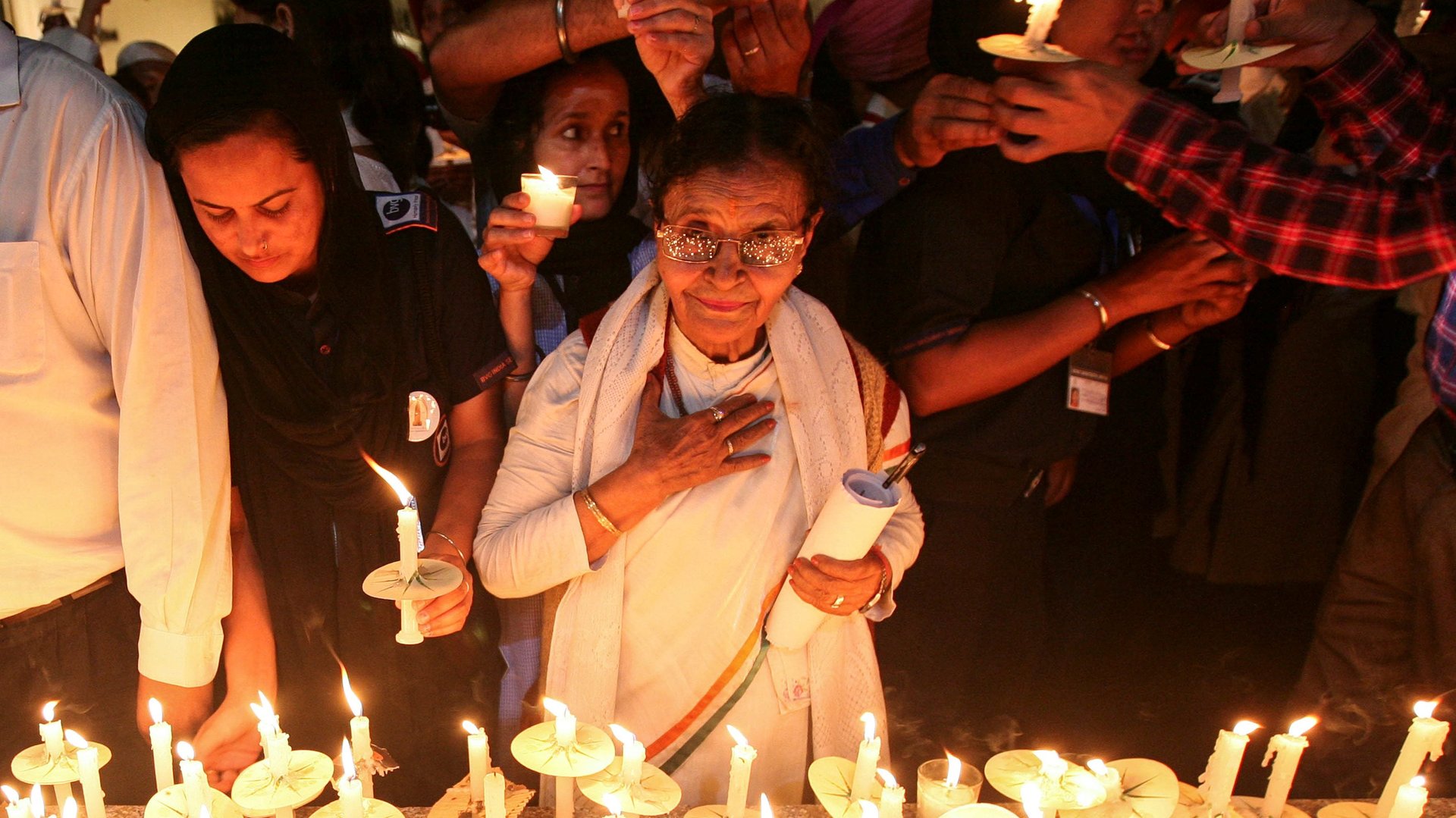India is turning the site of a colonial massacre into an Instagram-friendly attraction
The Indian government is determined to make its colonial past more tourist-friendly. That would have been good news but for the focus on also making it equally Instagram-friendly.


The Indian government is determined to make its colonial past more tourist-friendly. That would have been good news but for the focus on also making it equally Instagram-friendly.
The “revamp” of the Jallianwala Bagh is a classic example of this. The site of a massacre ordered by British officers more than a century ago, the somber memorial has recently been given what several observers have called a tawdry makeover.
More seriously, the makeover amounts to the erasure of one of the greatest turning points in the Indian freedom struggle.
The Jallianwala Bagh massacre
On April 13, 1919, British troops led by General Reginald Dyer opened fire on a large crowd gathered in Jallianwala Bagh in Amritsar, in what was then an undivided Punjab. People gathered inside the large public park during Vaisakhi, a harvest festival, were peacefully protesting the arrests of freedom fighters Satya Pal and Saifuddin Kitchlew under the newly enacted Rowlatt Acts.
The aim of the Rowlatt Acts, named after a British judge, was to douse the various embers of freedom that were burning in various parts of pre-Partition India. Under this law, the police could arrest suspects without actual evidence of wrongdoing, while allowing certain politically incendiary cases to be tried without a jury. Comparisons have been made with the existing Unlawful Activities Prevention Act in present-day India, with several activists languishing in jail for several months without a trial.
If Satya Pal and Kitchlew’s arrest sparked the fire of revolution in the hearts of many in Punjab, the calculated brutality of Jallianwala Bagh—opening fire on a large crowd while blocking the only narrow exit—helped ensure the revolution became a national issue.
To sit and reflect at Jallianwala Bagh
I visited Jallianwala Bagh as a 20-year-old student of literature. But more personally, I went in thinking about my grandparents who witnessed first-hand the heartbreak and trauma of Partition. I grew up listening to stories about Amritsar, the courage of the average Indian, and what it meant to leave home during Partition.
During that visit, I almost missed the entrance to Jallianwala Bagh. It stands between Amritsar’s Town Hall—which now houses the Partition Museum—and the Golden Temple, Sikhism’s holiest site. I entered a small gate, into a narrow alley, which still bore the bullet marks from 1919. The Bagh has a well, and one can peer over and stare into its abyss. This is where countless people either jumped in to escape bullets or fell after getting shot.
What I remember most were the various stone benches for visitors to sit and reflect. There were children scuttling about, but the sense of gravitas was unmistakable. From all accounts, the revamp appears to have taken all of this reflection away.
The Jallianwala Bagh spectacle
First-hand accounts of visitors from the new Jallianwala Bagh say that the place has not only lost this character, it has also created a spectacle that is cringeworthy.
The first striking image is that of the narrow alley, its walls painted over and now covered with murals of merrymaking folks on their way to Vaisakhi celebrations. By most historical records, the Jallianwala Bagh gathering was not a joyous celebration. Families of those who were at Jallianwala Bagh that day in 1919 are appalled by the changes.
For instance, the well is now covered with a glass dome and offers a backlit view rather than the inky darkness staring back.
“It makes a great spot for selfies, as we saw one couple after another make a beeline for the backdrop. With the song ‘Pagdi Sambhaal Jatta’ streaming from the outdoor speakers, it also provides a somewhat curious ambience for video enthusiasts,” Navdeep Suri, a former diplomat whose grandfather survived the massacre, wrote in The Tribune newspaper. Bollywood songs, even if patriotic, blaring out of speakers do not facilitate quiet reflection. As historian Kim Wagner says, this is an alarming Disneyfication of the city of Amritsar.
This also appears to be only the first among the many Partition monuments that the Narendra Modi government wants to revamp. Much like the Central Vista project in Delhi and the Sabarmati Ashram in Ahmedabad, the current government is focused on leaving its mark on India’s contemporary history by retrofitting its design ideologies onto historical structures and facades.
The other travesty, Suri points out, is that the memorial now has an exit door, obliterating the entire experience of the people being trapped inside Jallianwala Bagh in 1919.
Similarly, a sound-and-light show at a massacre memorial is questionable to say the least. It also brings into question the government’s contract with Vama Communications, a Gujarat-based entertainment company, instead of tapping into the recommendations of the local community that is entrenched in this history.
The families of the 1919 martyrs have begun protesting this “beautification.” They led a candlelight march on Sept. 6 in Amritsar to try and compel the government to restore Jallianwala Bagh’s original character. A panel of historians has also written to prime minister Narendra Modi.
The city administration in Amritsar has imposed a Section 144 notice in the area—it prohibits free public movement and the gathering of more than five people at a time. In April 1919, let’s not forget, Jallianwala Bagh protesters gathered despite similar restrictions imposed by the British.